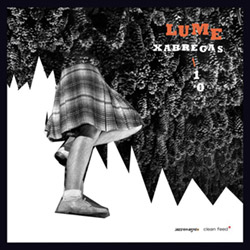
Lisbon Underground Music Ensemble (LUME) is an 11-piece ensemble led by pianist Marco Barroso, here captured live at the 2014 festival Jazz em Agosto for an unusual concert that blends free jazz, noise, rock, musical quotes and much, much more in exhiliarating ways.
In Stock
Quantity in Basket: None
Log In to use our Wish List
Shipping Weight: 3.00 units
EU & UK Customers:
Discogs.com can handle your VAT payments
So please order through Discogs
Sample The Album:
Marco Barroso-direction, piano
Manuel Luis Cochofel-flute
Paulo Gaspar-clarinet
Jorge Reis-soprano saxophone
Joao Pedro Silva-alto saxophone
Ricardo Toscano-alto saxophone
Jose Menezes-tenor saxophone
Elmano Coelho-baritone saxophone
Sergio Charrinho-trumpet
Pedro Monteiro-trumpet
Goncalo Marques-trumpet
Luis Cunha-trombone
Eduardo Lala-trombone
Mario Vicente-trombone
Miguel Amado-electric bass
Andre Sousa Machado-drums
Click an artist name above to see in-stock items for that artist.
UPC: 5609063003710
Label: Clean Feed
Catalog ID: CF371
Squidco Product Code: 22125
Format: CD
Condition: New
Released: 2016
Country: Portugal
Recorded at Jazz em Agosto, in Lisbon, Portugal, on August 10th, 2014 by Joao Paulo Nogueira.
"A live recording of the concert presented by the very peculiar big band LUME (acronym of Lisbon Underground Music Ensemble) in the 2014 edition of the festival Jazz em Agosto, Xabregas 10 documents a particularly successful gig with the participation of the recently deceased saxophonist Jorge Reis, to whom the CD is dedicated.
And peculiar because, being a jazz orchestra, its leader and composer Marco Barroso comes from contemporary classical music and has a strong devotion for rock and funk, two factors immediately recognized in the groovy and heavy, but very complex, pieces here assembled - beginning immediately with "Astromassa", a metal-like composition in which the 12 blowing instruments (four saxophones, a clarinet, a flute, three trumpets, three trombones) can be more powerful than a couple of over-amplified and distorted electric guitars. This same piece includes an alto sax solo by Ricardo Toscano, a young wonder player who recorded it in the post-production process: he was invited for the project after Reis death, and his inclusion here is somewhat symbolical.
LUME has a post-modernist attitude, mixing elements from distinct origins in an unprejudiced way and doing it with a statement ("we're here and we're not going anywhere; deal with us"), not very common before in the Portuguese jazz scene. And if the collective behaves with that mood, very affirmatively, it also defines the solos by Eduardo Lála (trombone), José Menezes (tenor saxophone) and Gonçalo Marques (trumpet). In one word: stratospheric."-Clean Feed
"What do you get when you mix improvisation, noise, plunderphonics, big band theatricality, and the mad-dash orchestrations of "Looney Tunes" composer Carl Stalling? Some might say that you get a "disjointed mess," which would probably be true in most cases. There are ways of making such a diverse heap of ingredients work, however, and the Lisbon Underground Music Ensemble (LUME) has seemingly stumbled upon the recipe.
In 2010, LUME released their debut album. With its ever-shifting, fun-house approach to genres, it remains an astoundingly fresh and unique recording. With such indefatigable inventiveness, however, the question had to arise: how can LUME move forward? Being such a progressive-sounding group is a blessing and a curse. On the one hand, there are no expectations and no limitations, and you're free to switch gears without any forewarnings or fare-thee-wells to the experiments you leave behind. On the other hand, there is often the crushing pressure for a progressive band to actually, well, progress - if you stick around in the same place for too long, you're bound to get accused of creative stasis.
With Xabregas 10, LUME defy these accusations and soar over the heads of anyone waiting with land-locked eyes for them to crash or stall. They don't do this by ramping up the insanity, however, or layering on more samples, or increasing the rate at which their manic melodies unfold themselves. In fact, they do the exact opposite - they dial it back. They lock into grooves. They open their arms to repetition. Don't take this as a sign of slowing-down, though; LUME haven't slowed down so much as become more focused, more deliberate, and more steady-handed in their approach.
The album opens strong with "Astromassa," which owes as much to final-boss video-game music as it does to Frank Zappa's Uncle Meat. That's to say: it's compositionally inventive and occasionally veers off into mad-cap melodicism, but is (at heart) a drama-filled rave-up. A lot of credit has to be given to LUME's primary composer, Mário Barroso; while there is a sense of underlying mayhem that sometimes rears its head, the myriad instruments and electronic elements that occupy "Astromassa" are largely kept in-check, wrapping around each other in both precise lines and wild (but contained) zig-zags. "Sandblast" is similarly structured, but replaces the histrionics of the previous piece with something more eminently danceable. The bass-line that drives the composition is straight out of the James Brown playbook, and André Sousa Machado's percussion is a pulsing ode to Afro-Cuban polyrhythms. Interspersed throughout all this funk are bursts of improvisation, with José Menezes (on tenor sax) and a trombone (although I don't know whose) both taking wild, energetic solos.
"Polén" slows things down a bit, but it's every bit as exciting as the pieces that came before. Once again, the rhythm section occupies a central role, Miguel Amado's bass and Machado's drums providing a solid back-bone for the swirling, heaving waves of sound that the other members of LUME produce. This composition is more indebted to developments of the slow and textural sort, avoiding the twists-and-turns of "Astromassa," "Sandblast," and, well, the vast majority of LUME's previously-recorded output. That's not a bad thing, though; it shows that they are well-equipped to handle a more restrained approach, and it shows that composer Barroso doesn't shy away from stuff that might be outside of his comfort zone. At its conclusion, "Polén" gives way to a dense, chaotic wall-of-sound that eventually dissipates, leading to the final piece.
"LSW" begins with a vocal sample in Korean, one that marks the return of LUME to the manic, endlessly-allusive style of their debut recording. After that, there's very little in the way of rest: there are snatches of familiar melodies, snippets of conversation from old television programs and movies, and explosive outbursts from the band itself, all wound together in a tight package that has the kinetic force of a hand grenade. After the halfway point, the composition dips again into the "wall-of-sound" technique that marked the end of "Polén," but now it's even thicker and more disorienting. By the time this wall is abruptly removed, the listener is left in an ecstatic daze - not just because of the pyrotechnics they have just heard, but because of the effect of the album as a whole. Xabregas 10 is a glorious mess, and one that I can highly recommend to anyone on the look-out for music that simultaneously batters the senses into the ground and sends them spiraling into space.-Derek Stone, Free Jazz Blog
Get additional information at Free Jazz Blog
Artist Biographies
• Show Bio for Ricardo Toscano "Saxophonist Ricardo Toscano grew up playing ball and listening to jazz. The young musician began in the Band of the Philharmonic Society Operária Amorense, where at age 8 he played the clarinet, continuing his musical education at the Metropolitana professional school and at the Luis Villas Boas Jazz School where, at the age of 16, he started playing the saxophone. Considered the best national musician in 2015, with only 22 years, that year he sold out two dates at Culturgest and already in 2016 he filled the Centro Cultural de Belém. The celebration of a journey that was not merely a school learning, but above all a passion for jazz, when still small the father familiarized it with Cannonball Adderley discs in duet with Bill Evans, Miles Davis or John Coltrane. From an early age Ricardo Toscano became aware that his future was for jazz and for the saxophone dictated by the saxophone. He began to record his name in the music scene, gaining visibility while lounging Mário Laginha in the resuscitated Lisbon Sextet Jazz, and having in the curriculum shows at Estoril Jazz and Angra Jazz, performances with the Sexteto de Lisboa, Decateto de Nelson Cascais, the Mingus Project or in the formations of Júlio Resende. Still very young, Toscano revisits the tradition hard bop, drinking in Coltrane, Parker or Ornette Coleman, historical period of the jazz that considers more stimulating. In Seixal, he is accompanied by young musicians, João Pedro Coelho, Romeu Tristão and João Pereira. Passionate about the same musical record, balanced between melodious repertoire and free improvisation, the quartet has established its jazz language and plans to record its first record." ^ Hide Bio for Ricardo Toscano
11/20/2024
Have a better biography or biography source? Please Contact Us so that we can update this biography.
Track Listing:
1. Astromassa 10:04
2. Sandblast 10:33
3. Polen 14:00
4. Lsw 10:20
Improvised Music
Jazz
European Improvisation, Composition and Experimental Forms
Large Ensembles
Clean Feed
Staff Picks & Recommended Items
Search for other titles on the label:
Clean Feed.


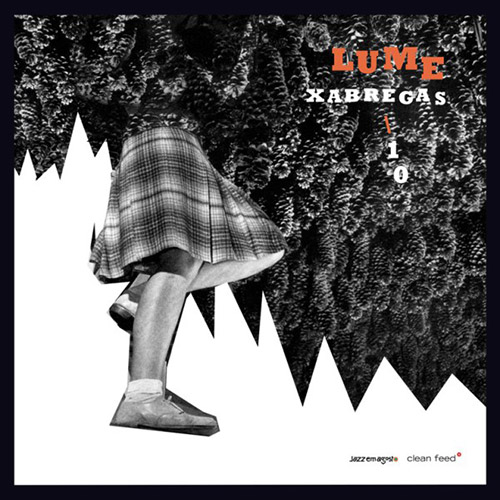

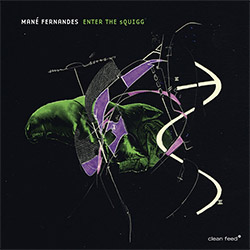
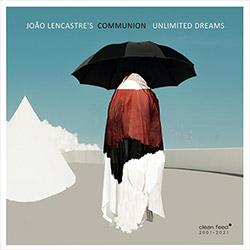
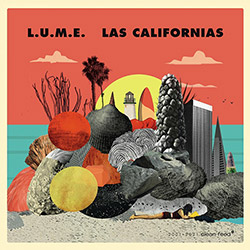

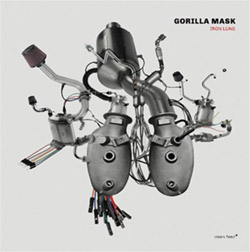




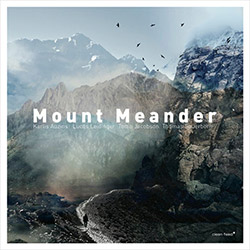
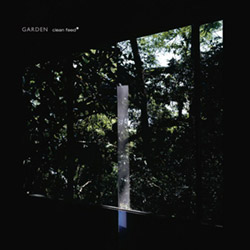




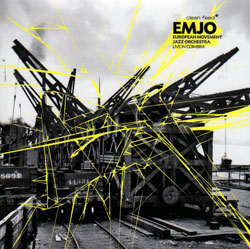

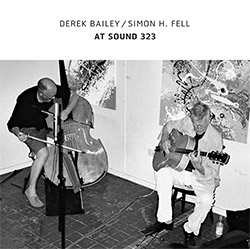




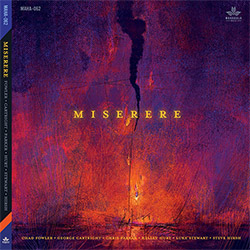
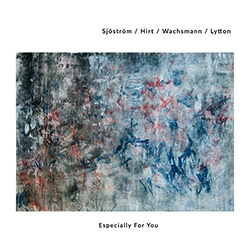



![Guy, Barry / Ken Vandermark: Occasional Poems [2 CDs]](https://www.teuthida.com/productImages/misc4/34849.jpg)
![Novoa / Carter / Mela Trio: Vol.1 [VINYL]](https://www.teuthida.com/productImages/misc4/35236.jpg)


![Elephant9 : Mythical River [VINYL]](https://www.teuthida.com/productImages/misc4/34624.jpg)
![Evans, Peter (Evans / Eldh / Black): Extra [VINYL]](https://www.teuthida.com/productImages/misc4/35279.jpg)

![McPhee, Joe: Straight Up, Without Wings [BOOK]](https://www.teuthida.com/productImages/misc4/35454.jpg)
![Jeck, Philip: rpm [2 CDs]](https://www.teuthida.com/productImages/misc4/35455.jpg)













![Barker / Parker / Irabagon: Bakunawa [VINYL]](https://www.teuthida.com/productImages/misc4/35533.jpg)
![Blaser, Samuel / Marc Ducret / Peter Bruun: Dark Was The Night, Cold Was The Ground [VINYL 10-inch]](https://www.teuthida.com/productImages/misc4/35492.jpg)








![Warren, Kenny (Warren / Hoffman / Ellman): Sweet World [VINYL]](https://www.teuthida.com/productImages/misc4/35451.jpg)




![Blake, Ran / Dave Knife Fabris: Live Amsterdam 2006, First Visit [CD + POSTCARDS]](https://www.teuthida.com/productImages/misc4/35275.jpg)













![DNS: Taking Big Bites Of The Khandas Three Cafes Deep [2 CDs]](https://www.teuthida.com/productImages/misc4/35334.jpg)




![Cleaver, Gerald: The Process [VINYL]](https://www.teuthida.com/productImages/misc4/34966.jpg)




![Alva Noto: HYbr:ID II [VINYL 2 LPs]](https://www.teuthida.com/productImages/misc4/35201.jpg)

![Baron, Derek / Luke Martin: Distinct and Concealed [CASSETTE + DOWNLOAD]](https://www.teuthida.com/productImages/misc4/35079.jpg)

![Lyle, Erica Dawn : Colonial Motels [CASSETTE + DOWNLOAD]](https://www.teuthida.com/productImages/misc4/35080.jpg)









![Sanna, Claudio: Compositori Sardi Contemporanei II [2 CDs]](https://www.teuthida.com/productImages/misc4/35317.jpg)







![Zurria, Manuel: Fame di Vento [3 CDs]](https://www.teuthida.com/productImages/misc4/35167.jpg)

![Granberg, Magnus / Nattens Inbrott / Skogen: Holde Traume, Kehret Wieder! [2 CDs]](https://www.teuthida.com/productImages/misc4/35038.jpg)
![Frey, Jurg: Outermost Melodie [2 CDs]](https://www.teuthida.com/productImages/misc4/35039.jpg)

![Pavone, Jessica: Reverse Bloom [VINYL]](https://www.teuthida.com/productImages/misc4/34895.jpg)




![Modney (Modney / Wooley / Gentile / Roberts / Pluta / Symthe / ...): Ascending Primes [2 CDs]](https://www.teuthida.com/productImages/misc4/34852.jpg)









![Elephant9 with Terje Rypdal: Catching Fire [VINYL 2 LPs]](https://www.teuthida.com/productImages/misc4/35355.jpg)
![Deerlady (Obomsawin, Mali / Magdalena Abrego): Greatest Hits [VINYL]](https://www.teuthida.com/productImages/misc4/34876.jpg)




![Haino, Keiji: Black Blues [2 CDs]](https://www.teuthida.com/productImages/misc4/35109.jpg)



![Surplus 1980: Illusion of Consistency [CD]](https://www.teuthida.com/productImages/misc4/35069.jpg)
![Staiano, Moe: Away Towards the Light [VINYL + DOWNLOAD]](https://www.teuthida.com/productImages/misc4/35037.jpg)



![Caveira (Gomes / Sousa / Abras / Ferrandini): Ficar Vivo [VINYL]](https://www.teuthida.com/productImages/misc4/34643.jpg)
![Gregg, J. J. / David Van Auken: Lunar Prairie [CD w/ DOWNLOAD]](https://www.teuthida.com/productImages/misc4/34611.jpg)

![Coultrain: Mundus [VINYL]](https://www.teuthida.com/productImages/misc4/32439.jpg)
![Mattin: Songbook #6 [VINYL]](https://www.teuthida.com/productImages/misc4/27317.jpg)
![Punkappella: Wake Up [7-inch VINYL]](https://www.teuthida.com/productImages/misc4/17519.jpg)
![Residents, The: WARNING: UNiNC.: Live And Experimental Recordings 1971-1972 [VINYL 2 LPs]](https://www.teuthida.com/productImages/misc4/31521.jpg)
![Coultrain: Phantasmagoria [VINYL]](https://www.teuthida.com/productImages/misc4/30142.jpg)
![Lennon, Sean Ono: Asterisms [VINYL]](https://www.teuthida.com/productImages/misc4/34517.jpg)

![Coley, Byron: Dating Tips for Touring Bands [VINYL]](https://www.teuthida.com/productImages/misc4/17906.jpg)

![Lost Kisses: My Life is Sad & Funny [DVD]](https://www.teuthida.com/productImages/misc4/lostKissesDVD.jpg)